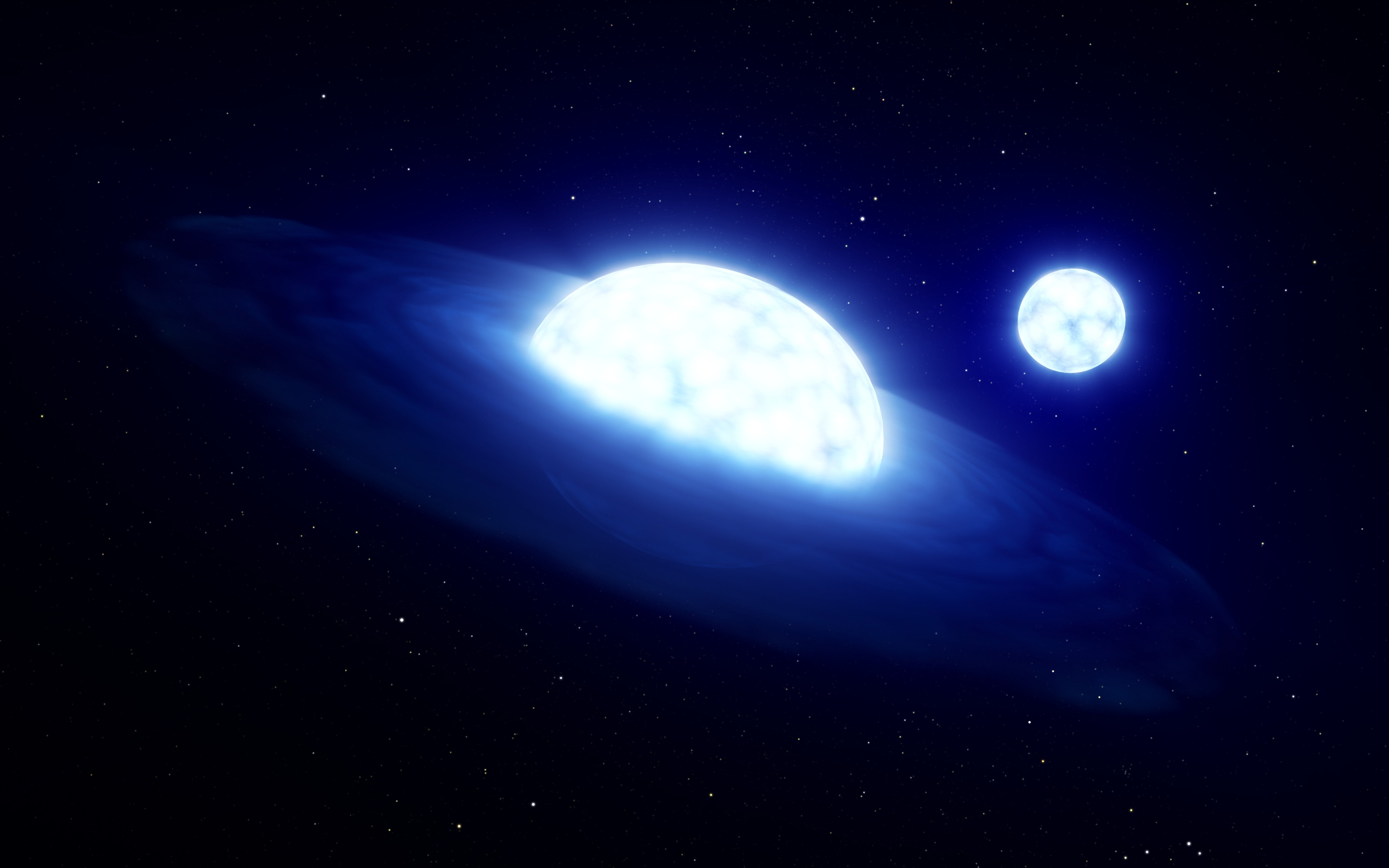‘Closest black hole’ system to Earth found to contain no black hole – study
Researchers agree there is no black hole in HR 6819, which is instead a vampire two-star system where one star has stripped material from the other.

Your support helps us to tell the story
From reproductive rights to climate change to Big Tech, The Independent is on the ground when the story is developing. Whether it's investigating the financials of Elon Musk's pro-Trump PAC or producing our latest documentary, 'The A Word', which shines a light on the American women fighting for reproductive rights, we know how important it is to parse out the facts from the messaging.
At such a critical moment in US history, we need reporters on the ground. Your donation allows us to keep sending journalists to speak to both sides of the story.
The Independent is trusted by Americans across the entire political spectrum. And unlike many other quality news outlets, we choose not to lock Americans out of our reporting and analysis with paywalls. We believe quality journalism should be available to everyone, paid for by those who can afford it.
Your support makes all the difference.There is no black hole in the system previously thought to house the closest black hole to Earth, astronomers have found.
In 2020, a team led by European Southern Observatory (ESO) astronomers reported the closest black hole to Earth, located just 1,000 light-years away in the HR 6819 system.
However, their findings were challenged by other researchers, including by an international team based at KU Leuven, Belgium.
The teams agreed there were two sources of light in the system, but questions remained around whether both sources orbited each other closely – requiring one star to be stripped by the other, or were far apart – the black hole scenario.
In new research published on Tuesday, both teams united to report that there is no black hole in HR 6819, which is instead a vampire two-star system where one star has stripped material from the other.
Our best interpretation so far is that we caught this binary system in a moment shortly after one of the stars had sucked the atmosphere off its companion star
Thomas Rivinius, a Chile-based ESO astronomer and lead author on the original study, and his colleagues were convinced the best explanation for the data they had was that HR 6819 was a triple system, with one star orbiting a black hole every 40 days and a second star in a much wider orbit.
However, a study led by Julia Bodensteiner, then a PhD student at KU Leuven, Belgium, proposed a different explanation for the same data.
They suggested HR 6819 could also be a system with only two stars on a 40-day orbit and no black hole at all.
This alternative scenario would mean that at an earlier stage one of the stars had stripped material from the other, sucking its essence away like a vampire.
Referring to the new study, Dr Bodensteiner explained: “Our best interpretation so far is that we caught this binary system in a moment shortly after one of the stars had sucked the atmosphere off its companion star.
“This is a common phenomenon in close binary systems, sometimes referred to as ‘stellar vampirism’ in the press.
“While the donor star was stripped of some of its material, the recipient star began to spin more rapidly.”
KU Leuven researcher Abigail Frost added: “Catching such a post-interaction phase is extremely difficult as it is so short.
“This makes our findings for HR 6819 very exciting, as it presents a perfect candidate to study how this vampirism affects the evolution of massive stars, and in turn the formation of their associated phenomena including gravitational waves and violent supernova explosions.”
Dr Frost, who led the new study published in Astronomy & Astrophysics, said: “We had reached the limit of the existing data, so we had to turn to a different observational strategy to decide between the two scenarios proposed by the two teams.”
To solve the mystery, the two teams obtained new, sharper data of HR 6819 using ESO’s Very Large Telescope (VLT) and Very Large Telescope Interferometer (VLTI).
Mr Rivinius said: “The scenarios we were looking for were rather clear, very different and easily distinguishable with the right instrument.
“We agreed that there were two sources of light in the system, so the question was whether they orbit each other closely, as in the stripped-star scenario, or are far apart from each other, as in the black hole scenario.”
To distinguish between the two options, the astronomers used both the VLTI’s Gravity instrument and the Multi Unit Spectroscopic Explorer (Muse) instrument on ESO’s VLT.
Dr Frost said: “Muse confirmed that there was no bright companion in a wider orbit, while Gravity’s high spatial resolution was able to resolve two bright sources separated by only one-third of the distance between the Earth and the Sun.
“These data proved to be the final piece of the puzzle, and allowed us to conclude that HR 6819 is a binary system with no black hole.”